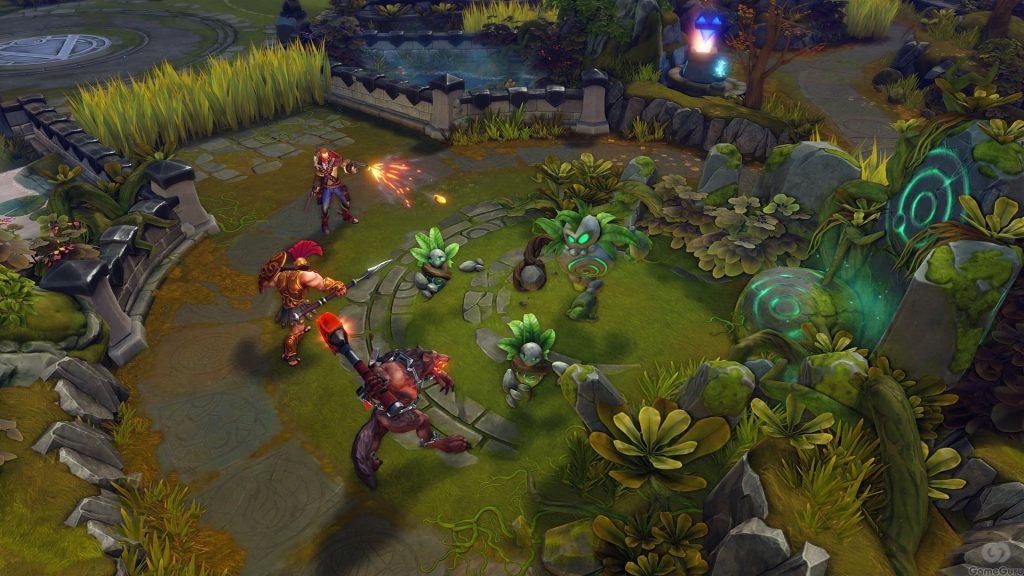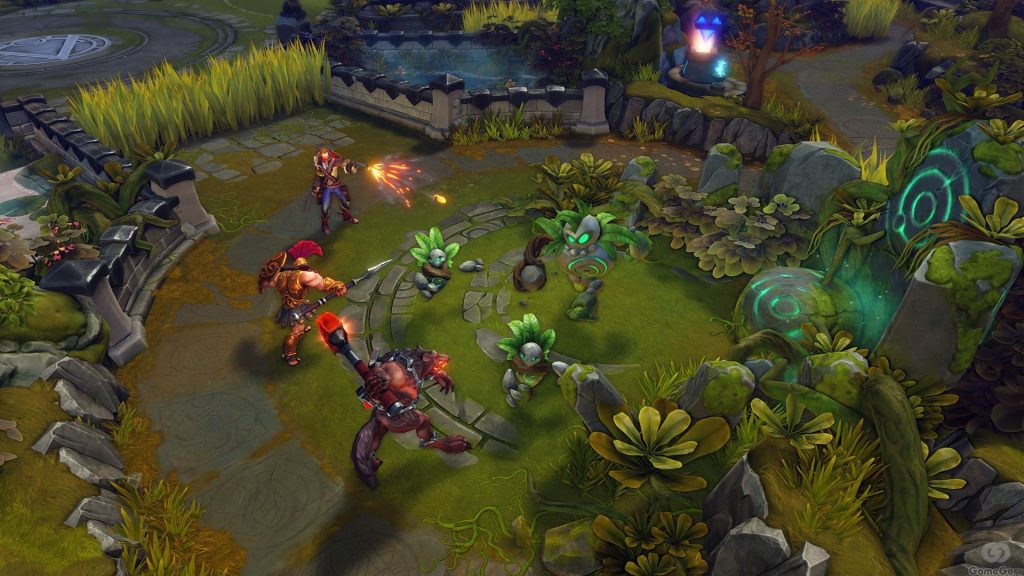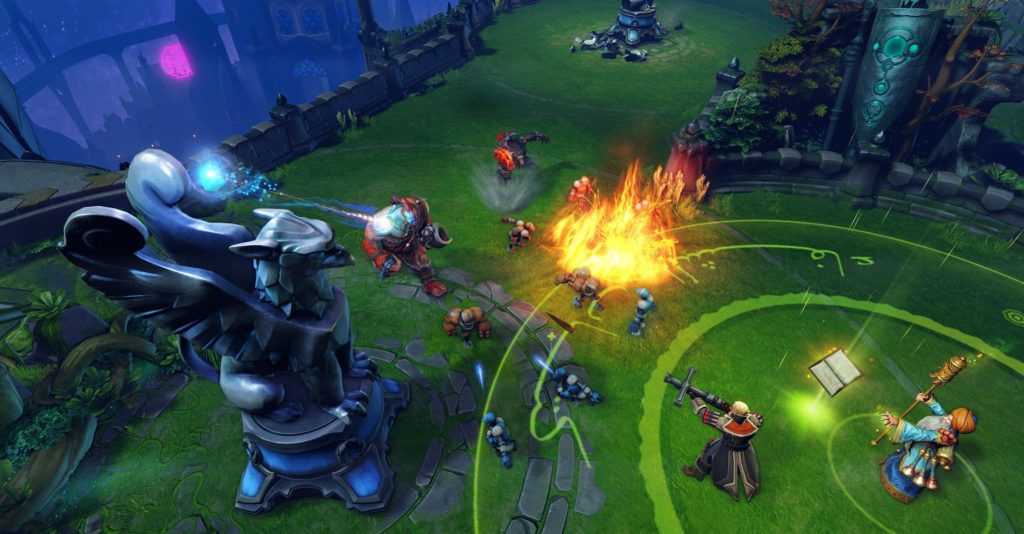Introduction
Multiplayer battle arena games, often abbreviated as MOBAs, have become one of the most popular genres in the gaming world. These games typically pit teams of players against each other in strategic, fast-paced combat scenarios, where skill, coordination, and quick decision-making determine the victor. What makes this genre stand out is its blend of real-time strategy, character-based gameplay, and intense competition. With a global fanbase and esports tournaments attracting millions of viewers, multiplayer battle arena games continue to dominate the gaming landscape.
The Origins And Evolution Of The MOBA Genre
The MOBA genre traces its roots back to custom maps in real-time strategy games, particularly the “Aeon of Strife” map in StarCraft and the widely influential “Defense of the Ancients” (DotA) mod for Warcraft III. These early creations laid the groundwork for a new genre that emphasized team-based objectives, hero-based combat, and strategic gameplay over traditional base-building mechanics. As the genre gained traction, standalone titles such as League of Legends and Heroes of Newerth began to appear, offering more polished and accessible versions of the original formula. Over time, developers experimented with new mechanics, modes, and visuals, leading to the diverse array of multiplayer battle arena games available today.

Key Gameplay Mechanics In MOBA Games
At the heart of every multiplayer battle arena game is the concept of lanes, towers, minions, and heroes. Players typically choose from a roster of characters, each with unique abilities and roles such as damage dealer, tank, support, or assassin. The game map is divided into lanes where players push forward, battling waves of AI-controlled minions while attempting to destroy enemy towers and ultimately their base. Objectives like jungle monsters, team fights, and map control add layers of strategy. The interplay between individual skill and team coordination creates a dynamic environment where every decision can have lasting consequences. Success in these games depends not only on mechanical skill but also on strategic thinking, communication, and adaptability.
League Of Legends: The Titan Of MOBAs
No discussion about multiplayer battle arena games is complete without mentioning League of Legends. Developed by Riot Games, this title has become the gold standard for the genre, with a massive global player base and one of the most lucrative esports scenes in the world. League of Legends features a wide variety of champions, each with a distinct set of skills and lore. The game offers a rich competitive experience through ranked ladders, seasonal updates, and international tournaments like the World Championship. Riot has also expanded the universe through animated series, music projects, and spin-off games, turning League of Legends into a cultural phenomenon beyond just a MOBA.
Dota 2: Strategic Depth And Esports Legacy
Developed by Valve Corporation, Dota 2 is the spiritual successor to the original DotA mod and is renowned for its complex gameplay and high skill ceiling. Dota 2 places a strong emphasis on resource management, precise timing, and strategic planning. The game’s mechanics, such as denying your own creeps to prevent enemy gold gain and a vast item system, set it apart from other MOBAs. Dota 2’s commitment to balance and gameplay depth has earned it a dedicated fanbase and a significant place in the esports world, particularly with its annual tournament, The International. Offering prize pools that reach tens of millions of dollars, The International is a testament to Dota 2’s enduring popularity and its impact on competitive gaming.
Smite: A Mythological Twist
Smite, developed by Hi-Rez Studios, differentiates itself from traditional MOBAs through its third-person perspective and mythological theme. Players take on the role of gods and mythological figures from various pantheons, engaging in combat that feels more like an action game than a top-down strategy title. This perspective changes how players engage with the environment and enemies, emphasizing aiming and positioning. Smite’s unique approach has attracted players who enjoy the MOBA formula but prefer a more immersive and action-oriented experience. The game also features multiple modes, including arena and joust, providing a variety of ways to enjoy the mythological battles.

Mobile MOBAs: Gaming On The Go
As smartphones have become more powerful, the MOBA genre has found a new home on mobile devices. Games like Mobile Legends: Bang Bang, Arena of Valor, and Pokémon Unite have brought the MOBA experience to handheld platforms with impressive results. These titles streamline gameplay for shorter sessions and touch controls, making them accessible to a broader audience. Mobile MOBAs often feature fast-paced matches, simplified mechanics, and robust monetization models. Despite their simplicity compared to PC counterparts, they maintain the core appeal of multiplayer battle arena games—teamwork, strategy, and skill. The success of mobile MOBAs proves that the genre can thrive beyond traditional gaming platforms.
The Rise Of MOBA Hybrids And Innovations
In recent years, developers have begun to experiment with the MOBA formula, blending it with other genres to create hybrid experiences. Games like Battlerite and Heroes of the Storm introduce new mechanics that deviate from the standard lane-pushing gameplay. Battlerite, for instance, focuses solely on combat with no towers or lanes, creating an arena brawler that emphasizes pure skill. Heroes of the Storm, developed by Blizzard Entertainment, integrates objectives into the map design and simplifies item and leveling systems. These innovations aim to make MOBAs more accessible while offering fresh gameplay for veteran players. The evolution of hybrid MOBAs illustrates the genre’s versatility and potential for further growth.
Community And Esports Impact
Multiplayer battle arena games have built massive communities that extend beyond the games themselves. Streaming platforms like Twitch and YouTube are filled with live gameplay, tutorials, and highlights from professional matches. Fans engage with content creators, participate in tournaments, and follow their favorite teams and players. Esports organizations have flourished around MOBAs, with structured leagues, regular events, and huge fanbases. The professional scene offers not just entertainment but also career opportunities for players, coaches, analysts, and content creators. Events like Worlds and The International draw millions of viewers and elevate competitive gaming to a global spectacle.
Learning Curve And Accessibility
One of the challenges that multiplayer battle arena games face is their steep learning curve. New players often find the multitude of characters, complex mechanics, and fast-paced gameplay overwhelming. Developers have responded with extensive tutorials, beginner-friendly modes, and AI matches to help ease the transition. Games like League of Legends and Dota 2 have introduced coaching systems and matchmaking improvements to foster a more supportive environment. While mastering a MOBA can take years, the satisfaction of learning and improving over time is part of the genre’s enduring appeal. Accessibility continues to be a focus, with efforts to make MOBAs more inclusive and rewarding for players at all skill levels.
The Psychology Of Competitive Play
Multiplayer battle arena games are designed to be highly competitive, which taps into players’ desires for mastery, recognition, and social interaction. The ranked ladder system provides clear progression and goals, while team-based gameplay fosters collaboration and rivalry. The emotional highs and lows of winning or losing can be intense, making each match a memorable experience. Psychological factors like tilt, team dynamics, and performance anxiety are common, and understanding them is essential for improving both gameplay and mindset. Many players find the competitive nature of MOBAs to be motivating, pushing them to practice, watch replays, and constantly refine their skills.
Monetization And In-Game Economies
Most multiplayer battle arena games are free-to-play, relying on microtransactions for revenue. These often include cosmetic items such as skins, emotes, and voice packs, which do not affect gameplay balance. Battle passes and seasonal content provide a steady stream of rewards and keep players engaged over time. Some games offer premium currencies and loot boxes, which have sparked debates about fairness and consumer protection. Nevertheless, when done responsibly, these monetization strategies allow developers to support ongoing development and maintain competitive integrity. The in-game economies of MOBAs are carefully designed to balance player satisfaction with profitability.
The Future of Multiplayer Battle Arena Games
As technology continues to evolve, so too will the MOBA genre. Upcoming advancements in graphics, artificial intelligence, and virtual reality could reshape how these games are played and experienced. Cross-platform play is becoming more common, allowing players from different devices to compete together seamlessly. Additionally, new titles are exploring fresh settings, mechanics, and storytelling approaches that push the boundaries of what a multiplayer battle arena game can be. With a dedicated player base and consistent developer support, the future of MOBAs looks promising. Innovations in gameplay, community features, and esports infrastructure will continue to shape the genre in exciting ways.

Conclusion
Multiplayer battle arena games have carved out a unique niche in the gaming world by combining strategic depth, character-driven gameplay, and competitive excitement. From the iconic clashes of League of Legends and Dota 2 to the mythological duels of Smite and the mobile convenience of Pokémon Unite, the genre offers something for every kind of player. While the learning curve may be steep, the rewards are substantial—intense team play, rewarding victories, and the thrill of competition. As MOBAs continue to evolve and expand, they remain at the forefront of gaming culture and esports entertainment, inviting players from all walks of life to engage in the ultimate battlefield.

